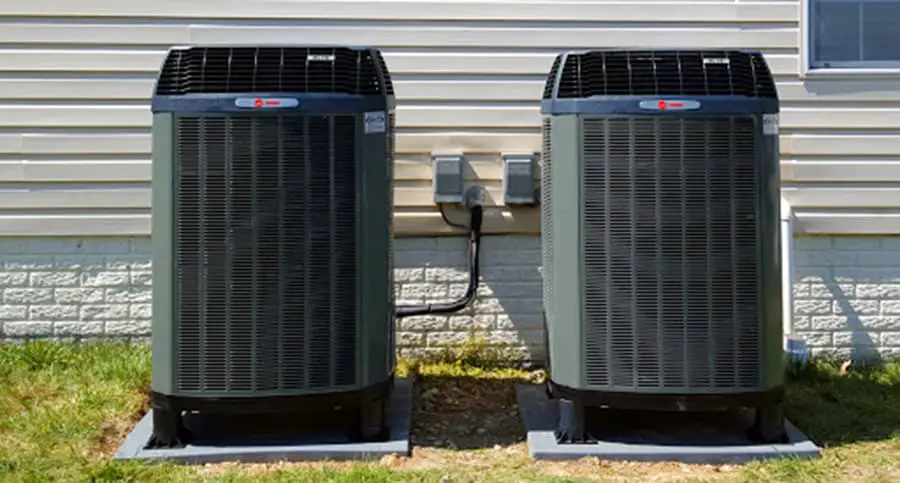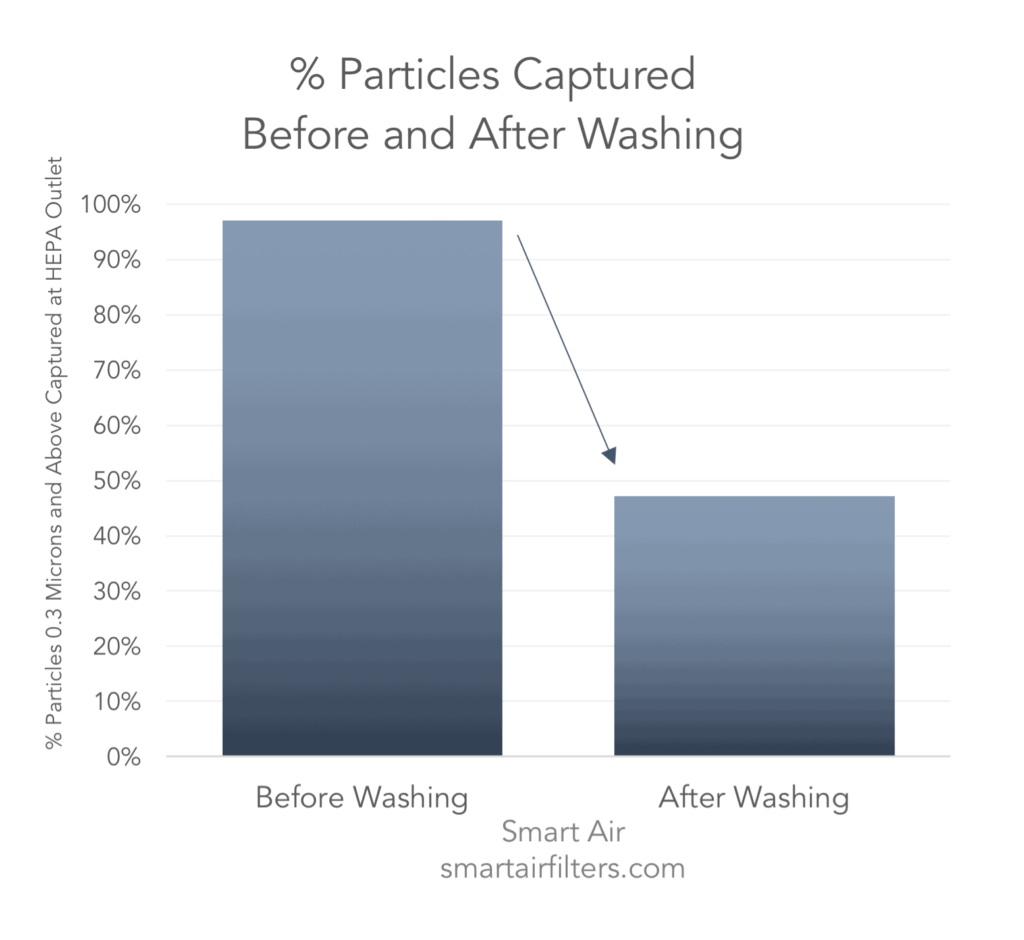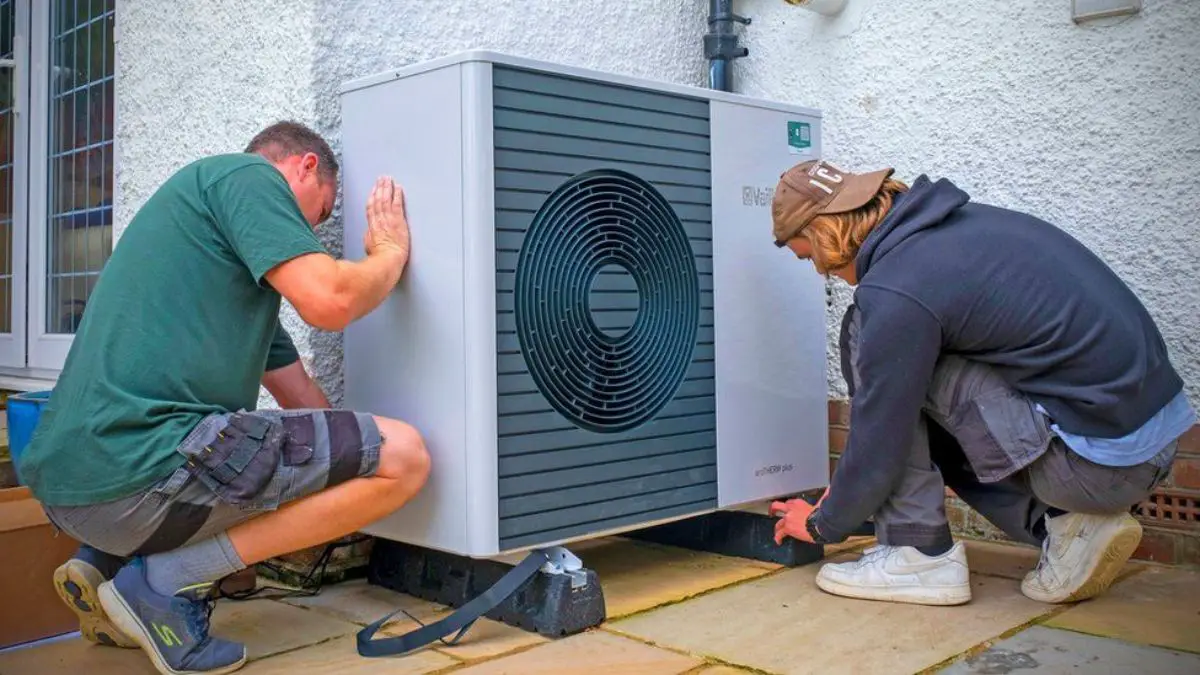As a Certified Master Inspector, I’ve been inspecting heat pumps for many years. Many homeowners neglect to service heat pumps, costing them thousands in premature equipment failure and higher energy bills.
Heat pumps need regular maintenance. To keep your ductwork clean, replace the heat pump air filter every 30 to 90 days. You should clean the indoor and outdoor coils twice a year. Heat pump service includes checking gas levels, fans, and other components.
Now that you have a general outline, I’ll cover exactly how to service your heat pump. Whether you’ve done it a few times or you’ve never done it before. This guide will cover everything you need to know.
How Often Should Service Heat Pumps?
Beaufort Air Conditioning and Arista recommend servicing your heating and cooling system twice yearly.
Service your units in the fall to prepare for the heating season and in the spring for the cooling season.
It’s said that an ounce of prevention is better than a pound of cure. The routine servicing costs incurred can help your heat pump last much longer than without. Regular servicing can catch minor issues before they damage critical parts.
If you notice any unusual noises from your heat pump, you’ll want to get it looked at as soon as possible. HVAC technicians often use message boards to discuss their work and share helpful information.
You can also take various preventative steps to limit your heat pump issues, which I’ll include in the guide. So, without further adieu, here’s the complete guide.

Steps to Maintain and Service Your Heat Pump
- Check the air filters once a month.
- Clear away any debris from in and around your units
- Keep at least 18 inches (45 cm) of clearance. For example, trim back shrubs around your outdoor unit.
- Clean the condensate lines in the spring to prevent clogs and ensure proper drainage for the condensation.
- Have a professional clean the internal evaporator and condensing coils.
- Service and clean the fans if needed.
Check the Air Filters Every 30 Days.
You’ll want to check the state of your air filters somewhat regularly. If you have pets or have recently done a renovation, then you’ll need to clean them more often.
There are many different styles, so I’ll explain the broad steps to give you an idea of what’s involved. The best way to see exactly how to do it is to read your user manual. Getting a technician is a good idea if your heat pump doesn’t have a user manual.
The indoor unit is usually in a closet, attic, or basement. The indoor unit is relatively easy to open. It’s also pretty easy to pull out the air filter to clean it.
Replacing a heat pump can be expensive, often exceeding $10,000. If you don’t have experience, don’t try to fix it yourself. Call in a professional to handle this for you.
If you like doing projects and need help, you can hire a skilled technician to show you how.
Once you’ve removed your air filters, replace disposable filters as needed every 30 to 90 days. If you have a washable filter, the easiest way to wash it is in warm, soapy water. The warm, soapy water softens the dust and debris, making it easy to remove.
Be sure to clean them gently to not damage the fine filter mesh. Once that’s done, rinse the filter off and leave it somewhere to dry.
Once you’re familiar with the process, it should take around 30 minutes from start to finish.
A range of filters come with HVAC systems; not all are washable. So, it’s essential to check what kind of filters your heat pump has before cleaning them. The most common air filters are disposable ones.
But, the outdoor cabinet can have a range of different filters. You may already know that experts consider a HEPA filter one of the best air filters. It removes the most particles from the air.
Washing or vacuuming these filters does little good. Smartairfilters conducted tests and found that washing and vacuuming HEPA filters only improved performance by 15%.
On top of that, they showed that it could decrease the performance of your air filters by 55%. So, a better idea is to replace HEPA filters. According to US Home Filter, a general rule is to replace heat pump filters every three months.

You’ll need to order replacements for your specific filters from the manufacturer. To replace them, follow the user guide or instructions from the manufacturer.
It can be a bit time-consuming and tricky. So, having a technician handle everything can be a good idea.
Clear Debris From In and Around Your Unit
Usually, this step is only for outside units. Over time, spider webs, leaves, twigs, or debris can accumulate around your heat pump.
Now and then, you’ll want to remove debris and clear away spider webs. Both can block the airflow, which puts more strain on the fan.
Clear 18 inches of Space Around Your Unit
Ideally, your system will be located where trees and shrubs can’t grow into them. But hedges, shrubs, or trees can grow over time, so they get too close, making it harder to draw in air.
So, you’ll want to trim any plants growing too close to it. You might also have some runner weeds that pop up and have used your unit as a trellis. You’ll want to keep these under control by pulling them out of the ground or cutting them near the roots.
Also, a family member, such as one of your children or a friend, might put objects around your heat pump. So, you’ll want to move these to make sure your heat pump is getting enough airflow.
Flush the Indoor Condensate Lines in the Spring
This step is a bit technical, and you may want a contractor to do it. It involves using an air compressor or a wet and dry vac to clear your condensate lines.
As part of the cooling process, condensation forms within your heat pump. The water drains along pipes and drips out while your heat pump runs.
They can get clogged with the buildup of algae in the pipes. If your condensate lines get blocked, water can back up, potentially causing water damage.
To remove them, check your user manual or watch online videos for your specific model. Each model has a unique configuration and opening.
The general method is to blow compressed air through the pipe to blast it loose or use a wet and dry vac to suck it out.
The issue is that you’ll need to be careful not to use too much pressure; otherwise, you might damage your heat pump. If you’re unsure, it’s best to get a contractor.
Clean the Evaporator and Condenser Coils
There are two separate coils: an evaporator and a condenser. According to US Home Filter, evaporator coils are found in indoor and outdoor units.
Over time, dust accumulates on them, and they don’t function as well, which strains other parts of your heat pump.
To clean the heat pump, find the model in your user manual or search online for diagrams.
The good news is they’re very easy to clean. You can use compressed air or a soft brush – like the brush that comes with a dustpan. You can use the brush alone or with a mild detergent and water.
If there is a buildup of gunk, consult an HVAC contractor. They will likely need to disassemble parts to access it.
Clean the blower wheel (the fan)
According to Gary’s Heating and Air Conditioning, this only needs to be done every 2 to 4 years. It’s best to have a technician remove the fan from the machine. Then, cleaning it with a brush and soapy water is easy.
You’ll then need to reinstall it.
Do a Full Service Twice a Year
You can do everything except flush the condensate lines and clean the blower wheel. This doesn’t apply to you unless you have experience as an electrician or handyman.
Full service includes inspecting and fixing.
- Duct leakages
- The electronic components, such as wiring and the computer
- The start-stop sequence
- Flushing the condensate lines
- Cleaning the fans
- Inspecting the Indoor Coil
- Examining the fan motor, electrical connections, and electrical wiring
- Checking the programmable thermostat
Have your HVAC maintenance yearly if you can’t do it twice a year.
Heat Pump Maintenance
Maintenance is essential to ensure optimal performance and longevity. Tasks include cleaning or replacing filters, lubricating moving parts, and checking refrigerant levels. To avoid expensive repairs, professionals advise checking for problems once a year.

Operating Tips For Maintaining Your Heat Pump
Maintaining your heat pump extends its life and makes it use less electricity. You can also operate to use it most efficiently and reduce wear and tear.
Use the ‘AUTO’ Setting When Running Your Heat Pump
The auto setting detects the air temperature. It turns off when it reaches your desired temperature. It also turns itself back on once the temperature exceeds what you’ve set it to.
In short, ‘Auto’ mode means your system turns on only when necessary to maintain temperature. In short, the Auto mode reduces energy consumption, maximizing energy savings.
Keep the Area Around Your Air Return Unobstructed
If there are objects near your air return, like furniture, it can struggle to circulate air.
This will mean it takes longer to heat and cool the air in your home, and the temperature in your home will be uneven. For example, it will be hot near the vents but cool in the rest of the room.

Heat Pump Maintenance Cost
Home Advisor says heat pump service costs $156 to $590, depending on many factors. Simpson Heating and Air Conditioning says replacement parts can cost $200 to $300.
Significant parts can be more expensive. For example, the compressor and the blower motor can range from $900 to $1500.
How Do You Know When To Service Your Heat Pump?
If your heat pump isn’t heating or cooling your home as well as it used to, it’s a clear sign you need to service it. If you hear strange noises like knocking or vibrations, get it serviced.
Should a Heat Pump Run All Night?
To run a heat pump all night, set it to ‘AUTO’ instead of ‘ON.’ When it’s set ‘ON,’ the blower fan runs continuously, regardless of the temperature in your home. On ‘AUTO,’ it will turn off when your home reaches the desired temperature.
Set your heat pump to ‘AUTO’ when cooling your home in the summer. Some regions get chilly at night, especially before dawn.

Why Are My Energy Bills High?
Your utility bills can be high because you use it a lot. It’s set to ‘ON’ rather than ‘AUTO,’ you are using Emergency Heat (Auxillary Heat) or because it needs a service.
If the parts of your heat pump are dirty, they must work harder to heat and cool and use more electricity.
When your thermostat is set to ‘ON,’ the blower fan will run continuously and use more electricity. If you put it to ‘AUTO,’ it will use less electricity by turning it off when it reaches the desired temperature.
If it’s winter and cold outside, your heat pump will likely use emergency heat to keep up. Emergency heat is the most expensive way to heat your home.
Maintaining and Servicing Your Heat Pump FAQs
What is routine maintenance for a heat pump?
Routine maintenance includes changing filters, cleaning indoor and outdoor coils, and checking refrigerant levels. Proper maintenance safeguards against potential issues and efficient operation throughout the year.
How often should a heat pump be serviced?
It’s best to have heat pumps serviced twice a year. The ideal time for this is spring and fall. It helps detect problems early and avoid expensive repairs, especially in extreme climates or with frequent use.
Do heat pumps need servicing?
Regular heat pump servicing is essential for optimal energy efficiency, longevity, and safety. It prevents too much work, maintains comfort, and catches problems early, which saves money and keeps warranties valid.
Can I clean my heat pump myself?
You can do basic heat pump maintenance like cleaning filters, clearing debris, and checking connections. For more thorough servicing, consult a professional HVAC technician.
What’s the ideal temp to set a heat pump in summer?
The ideal temperature to set a heat pump in the summer is around 74 to 78 degrees Fahrenheit.
What’s the ideal temp to set a heat pump in winter?
The ideal temperature to set a heat pump in winter is typically around 68 to 72 degrees Fahrenheit.
In Conclusion
To keep your system in good condition and working well, maintain and service it regularly. To improve efficiency, focus on your system’s outdoor unit, energy usage, bills, and outdoor and indoor coils. Follow these steps to make your heat pump last longer and use less energy while heating.
You’ll want to get your units serviced twice a year. It helps your HVAC system work efficiently, saves energy, and extends lifespan.
You can do some services, but others require specialized skills and knowledge. You can easily check, clean, and replace the air filters yourself. Also, keep the space around your heat pump clear of objects and debris.







